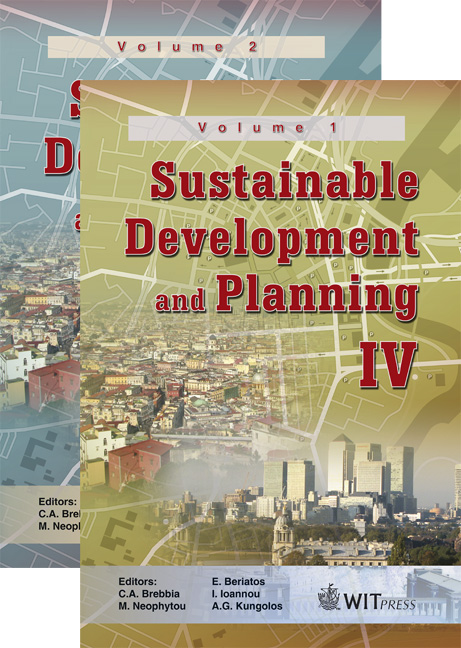From Planning Sustainable Cities To Designing Resilient Urban Regions
Price
Free (open access)
Transaction
Volume
120
Pages
10
Page Range
87 - 96
Published
2009
Size
259 kb
Paper DOI
10.2495/SDP090091
Copyright
WIT Press
Author(s)
D. Bogunovich
Abstract
In order to be ready for the harsh environmental challenges of the 21st century, cities need a new planning agenda. Defining this agenda is impossible without first revisiting the core concepts of our work: ‘sustainability’, ‘city’ and ‘urban planning’. A four-fold shift in emphasis is vital: from an excessive focus on the development density, to the monitoring and taming of urban metabolism; from a single focus on sustainability to one which also includes resilience; from traditional city to urban region; from policy and land-use planning to strategic urban and regional design. In most parts of the world, the battle for the compact city is lost. However, from the perspective of ecological sustainability, perhaps it was the wrong battle anyway. We should now direct our creative energies at deploying ecological design and clean technologies on a mass scale to our unstoppable, sprawling urban regions. Keywords: sustainability, resilience, urban metabolism, urban regions. 1 Introduction: a shift in emphasis Urban sprawl has been the subject of political and professional debates for more than 30 years. However, the question of what should be done about it - if anything at all - has not yet had a clear-cut answer. For most planners, designers, bureaucrats and politicians this has been the cause of considerable frustration. But they should take consolation in the fact that the messy debate has been fruitful otherwise. It has brought up to the surface two important trends. One of these is a shift in the perception of the problem: What started as concern over a nexus of primarily social or cultural issues (such as alienation and ugliness), over time became more focused towards
Keywords
sustainability, resilience, urban metabolism, urban regions.





